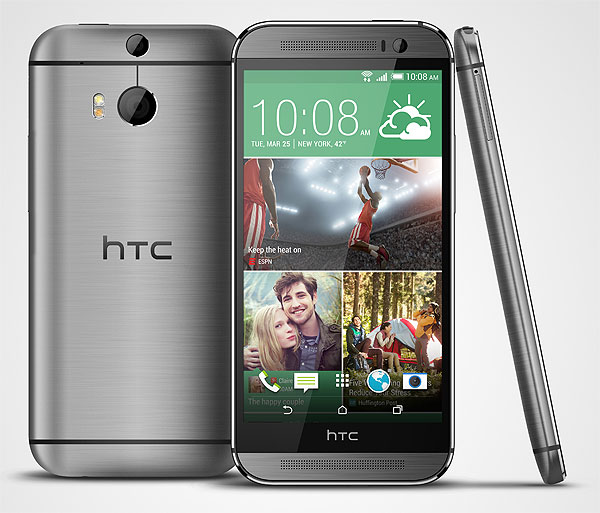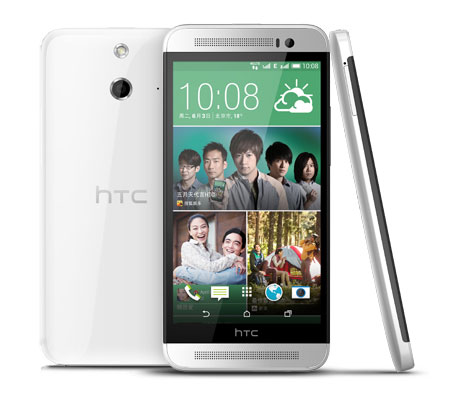HTC One (M8) And One (E8) Review: A Flagship And Its Sidekick
We run HTC's flagship Android smartphone, the One (M8), through our exhaustive benchmark suite. In addition, we take a close look at its less expensive sibling, the HTC One (E8). Both devices are compared and tested against a strong field of competition.
HTC's One (M8) And (E8): Two Strong Contenders; One At A Low Price
Let's Start With the HTC One (M8):
When HTC introduced the original One in 2013, I think it caught a lot of folks off-guard. They weren't expecting it to be as good as it turned out to be. Still, the company needed a game-changer. Something to thrust it back into the spotlight, making HTC a relevant name again. Sporting a beautiful metal chassis, sleek lines, and the Ultrapixel camera, its One (M7) did everything right. That phone was certainly one of the best (if not the best) all-around Android-based devices when it launched.
>> See the Reader Ratings and Advice for the HTC One M8
A year later, the One (M8) landed to greater expectations. And this is in a playing field filled with much more advanced competition. Enthusiasts who counted on being blown away by the One (M8) might be feeling a little underwhelmed. In truth, the most significant changes from last generation are a dual-camera system for depth-of-field adjustments, a slightly quicker SoC, and a nifty case that delivers information through its perforated cover. You wouldn't be out of line to call those gimmicky. If you wanted a game-changer, the One (M8) is not it.
But to be fair, the One (M7) was already an elegant piece of hardware. The updated model carries over that top-tier, modern pedigree. HTC tweaked it with one of the most powerful chipsets available, a longer-lasting battery, a larger screen, and even more metal in that attractive shell. It feels natural in your hand. It's not light to the point of feeling cheap. It's not heavy to the point where you find it bulky. It's just right. This phone might not be revolutionary, but HTC's One (M8) is the sort of evolution we're happy to accept.
Now, What About the HTC One (E8)?
Imagine this: you hand over your HTC One (M8), a device you're pleased to own. I pop out the second camera and its UFocus feature (which I'm not even in love with anyway) and swap in an admittedly slower 13 MP sensor. The IR blaster has to go, too. Sorry about that. Are you offended yet? Gee, we hope not.
Here's where you might get your feelings hurt, though. I also pull 16 GB of on-board flash, leaving you with just 16 GB of capacity, peel off the metal case, and replace it with a polycarbonate one. I hand the phone back...
...and you find that it's comfortably lighter, but still sturdy. You remember the microSD slot and add in your own card to replace the missing capacity. You're not positive you like the compromises, but then you get cash back as well (almost half the price you paid for the M8). Suddenly, the changes are easier to swallow. Congratulations, you're now the owner of HTC's One (E8).
Get Tom's Hardware's best news and in-depth reviews, straight to your inbox.
That's essentially the story you get in the markets allowed to carry HTC's more value-oriented effort. The price to performance ratio is compelling, and our main complaint has to be a lack of availability in North America. Where it is available, HTC's One (E8) seems like a smarter choice than the M8, unless you really want that metallic chassis and Ultrapixel camera. Shoot, even the Dot View case is available for both phones, so you can hide the polycarbonate body if it bothers you.
Current page: HTC's One (M8) And (E8): Two Strong Contenders; One At A Low Price
Prev Page Results: Battery LifeDon Woligroski was a former senior hardware editor for Tom's Hardware. He has covered a wide range of PC hardware topics, including CPUs, GPUs, system building, and emerging technologies.
-
Heironious The pricing says 1,309.00 for it on Amazon? May as well buy it straight from an authorized dealer for half that. It's a gorgeous phone and I don't regret picking it up over the Samsung S5 (mostly because of the cheap plastic of Samsung).Reply -
LordConrad I love my M8 except for that stupid depth-camera, they should remove it and bring back OIS.Reply -
JOSHSKORN Just stop comparing to the iPhone 5s until a comparable 64-bit chip is released and implemented into Android phones. Until then, the iPhone 5s "appears to be faster" (only on benchmarks) but as many of us know, it justifies buying an iPhone for most users, even though a 64-bit processor in a mobile phone may be pointless (for now).Reply -
CaedenV If I were the android type I would get this phone hands-down. If they released a WP version then I would jump all over it over the stuff Nokia has been pushing out in 2014 so far.Reply
The only 'complaints' that I have are the lack of wireless charging (impossible due to the metal back plate right?), and the lack of a sort of Nokia Glance screen (though other android devices are picking up similar features). The cover seems to bring that Glance functionality... but I really don't like that cover and would rather not. The thing is that with my lowly 920 I have built myself an upright wireless charging stand, and with glance screen enabled whenever the device has access to power, it makes a most excellent clock/notification center. With my 920 approaching 2 years old I am starting to look for a replacement, and as of the moment I am not finding one. WP has seemingly abandoned the high end devices, I am not apple compatible, and Android devices have a lot of really neat features... but then you deal with non-standard UIs and gimmickey software. I really hope something really good comes out before Christmas because the 920 is not getting any younger. -
stevessvt Wow, these benchmarks are, by far, the lowest I have seen for the M8. 27K in Antutu? Was power saver on?Reply -
Avus Holy!! $1300 for a phone.... I am too cheap for that...Reply
I am currently using Nexus 5 and happy with it. If I want to buy a phone now, I may want to get an Oneplus One. -
envy14tpe Great phone but that camera is what holds me back from buying it. So Samsung or Google gets my money, although Apple has the best camera. (However, no Apple..screen wayyy to small...Android flagship phones have been over 4" for 2+ years)Reply -
TeKEffect Me and my friend are both having problems with the usb port. They went cheap on the cheapest part. I would google the problem before getting the one.Reply

